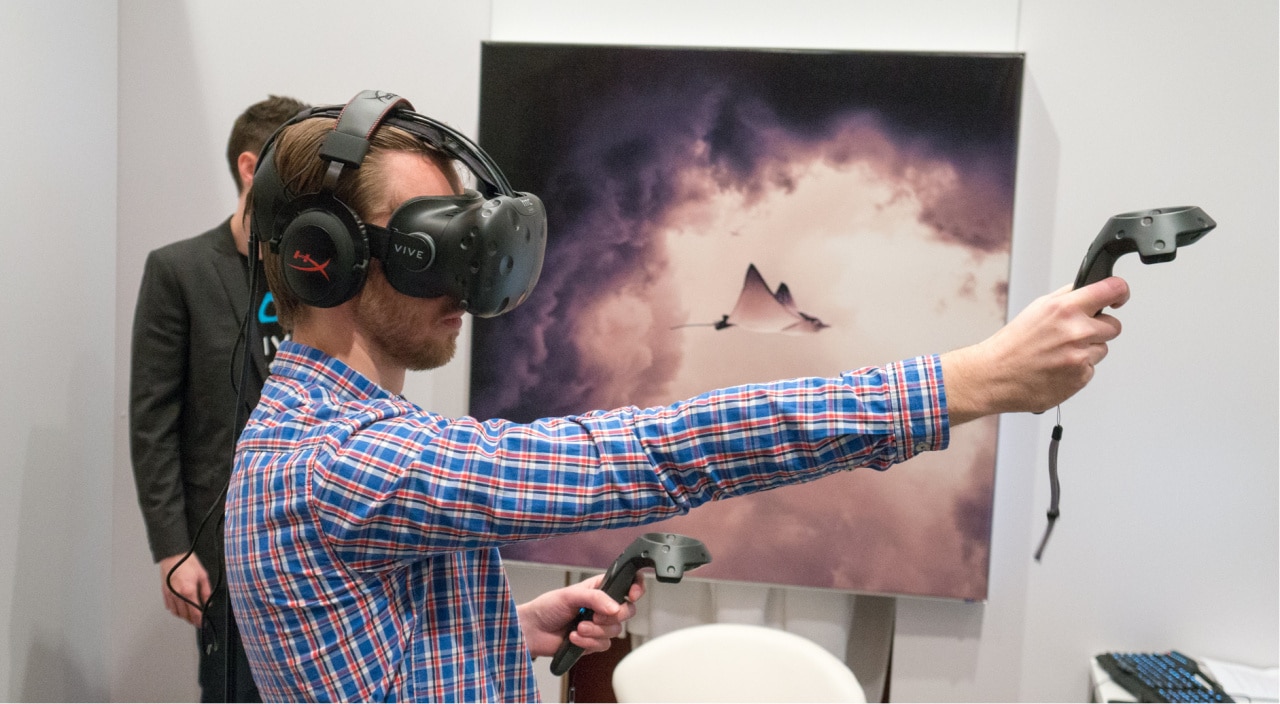Synthetic graphics card tests are hardly as hot as they once were. Points in various annual editions of 3DMark used to be at least as important in the world as FPS values in real game titles, but in recent years have been left behind. At least when enthusiasts think about what should be tested.
With that said, there are still good uses. 3DMark, VRMark and other synthetic test suites provide fast numbers that between the thumb and forefinger can tell how different systems stand against each other. No special knowledge or settings are required, but mostly a few simple keystrokes.
To the work! As an added bonus when the editors tested the Nvidia Geforce RTX 2080 Ti and RTX 2080, we also took the opportunity to collect a high number of figures from VRMark. These were not included in the article itself, but should of course not be wasted for it.
Components of the test systems
Component | model | Thanks to |
|---|---|---|
Processor | Intel Core i7-8700K @ 4,7 GHz | Web halls |
Motherboard | ASUS ROG Maximus 10 Hero | Asus |
Memory | 2 × 8 GB G Skill Trident Z RGB | G.Skill |
Cooling | Noctua NH-D15 | Noctua |
Storage | Samsung 970 Evo M.2, 1 TB | Samsung & |
Power supply | Seasonic Prime Ultra Titanium, 1 000 W | Seasonic |
Chassis | Streacom BC1 Open Benchtable | Streacom |
Screen | Dell P2415Q | |
Operating system | Windows 10 Professional 64-bit (1803) | |
As a basis, the editors are rolling out the autumn’s new test system – more about these in a separate article. In short, however, these are really great gaming machines with overclocked Intel Core i7-8700K in the center, plenty of DDR4 memory and fast storage in the M.2 connections.
This is how we carry out the tests
The great thing about UL Benchmark’s tests in the 3DMark and VRMark suites is precisely that the actual implementation is simple. Start the program and press the button, here is your result – ready!
The drivers used are the newest at the time of testing from AMD and Nvidia, respectively. These are the Geforce 411.51 Beta for the RTX 2000 series, Geforce 398.82 WHQL for the remaining Nvidia cards and Radeon Adrenaline Edition 18.8.1 for the AMD Radeon models.
First out is the Orange Room, the most easily driven of the three tests. According to UL Benchmark, the load corresponds to what is required to drive the Oculus Rift or HTC Vive, where approximately 5,000 points means approved. In other words, good results here mean a good experience with today’s VR hardware.
Unsurprisingly, the Nvidia Geforce RTX 2080 Ti is seen at the top, along with the GTX 1080 Ti and RTX 2080. All three end up with basically the same total, and the Geforce GTX 1080 is only marginally behind. This suggests that other factors are holding back the system.
The next subtest is called Cyan Room and has DirectX 12 under the shell. According to UL Benchmark, it aims to show what an interface with low overhead can do for the VR experience, as it allows more objects and more complex scenes without the processor saying stop. Again, about 5,000 points are approved.
Here it is clear that the Geforce RTX 2080 Ti FE is a faster graphics card. When no other parameters stop, it gets to run away really and lands about 27 percent over the nearest challenger – the weapon bearer RTX 2080 FE.
Last out is Blue Room, which according to UL Benchmark should be a test tailored for the next generation of VR hardware. These include 5K resolution and plenty of heavy light effects, where about 5,000 points means an approved result.
Here, too, the Geforce RTX 2080 Ti will be at the top, but not quite with the same juicy margin as with DirectX 12 – “only” 22 percent differs down to RTX 2080. After that, however, the step is big to GTX 1080 Ti, which is interesting as the models draws relatively evenly in many game tests.
Summary and VR thoughts
Most people probably agree that virtual reality has a future by now. However, opinions differ on exactly when the breakthrough will come, or in what way.
Are mobile phones and portable VR experiences taking over? Are these custom hardware / software combinations like Playstation VR? Will the focus land on StarVR and other solutions in the separate “VR cafe”? Or will there be triumphs on PC as soon as prices fall?
Either way, the numbers from VRMark show that graphics cards are becoming more powerful even for virtual reality – no surprise at all. Nvidia’s new RTX series is of course a step up, and a juicy one to that, but exactly how big is really hard to say.
Because there we have the challenge with fully synthetic tests. A score on its own says very little about how good the performance actually is and becomes difficult to connect to reality. Does 10,000 points correspond to an extra cruel experience, or is it power unnecessarily?
UL Benchmark provides some help along the way by telling you if the system is “ready for VR”, but it also quickly becomes fuzzy. For a pass, approximately 5,000 points, for example, an average frequency corresponding to what is recommended for each subtest is required – difficult to apply to other games or titles.
If you want to test your own graphics card, there is a free version of VRMark on the developers’ website. Those interested are advised to read UL Benchmkar’s technical review of the various subtests and their parameters.















